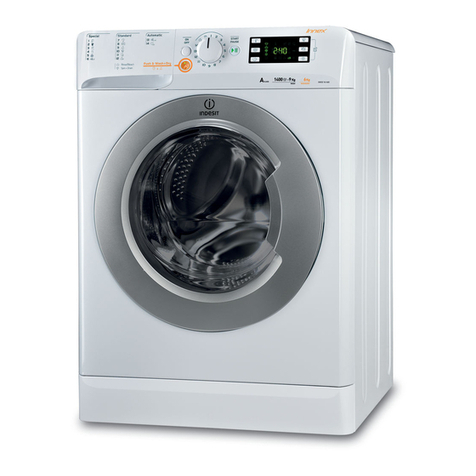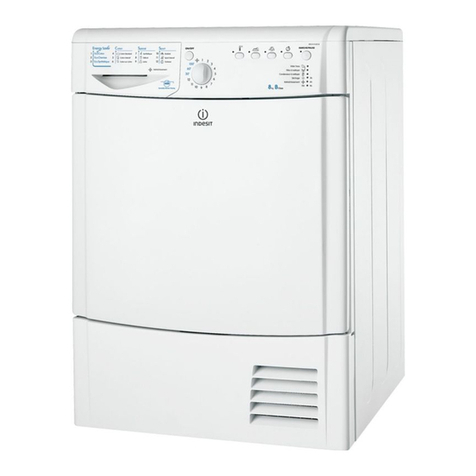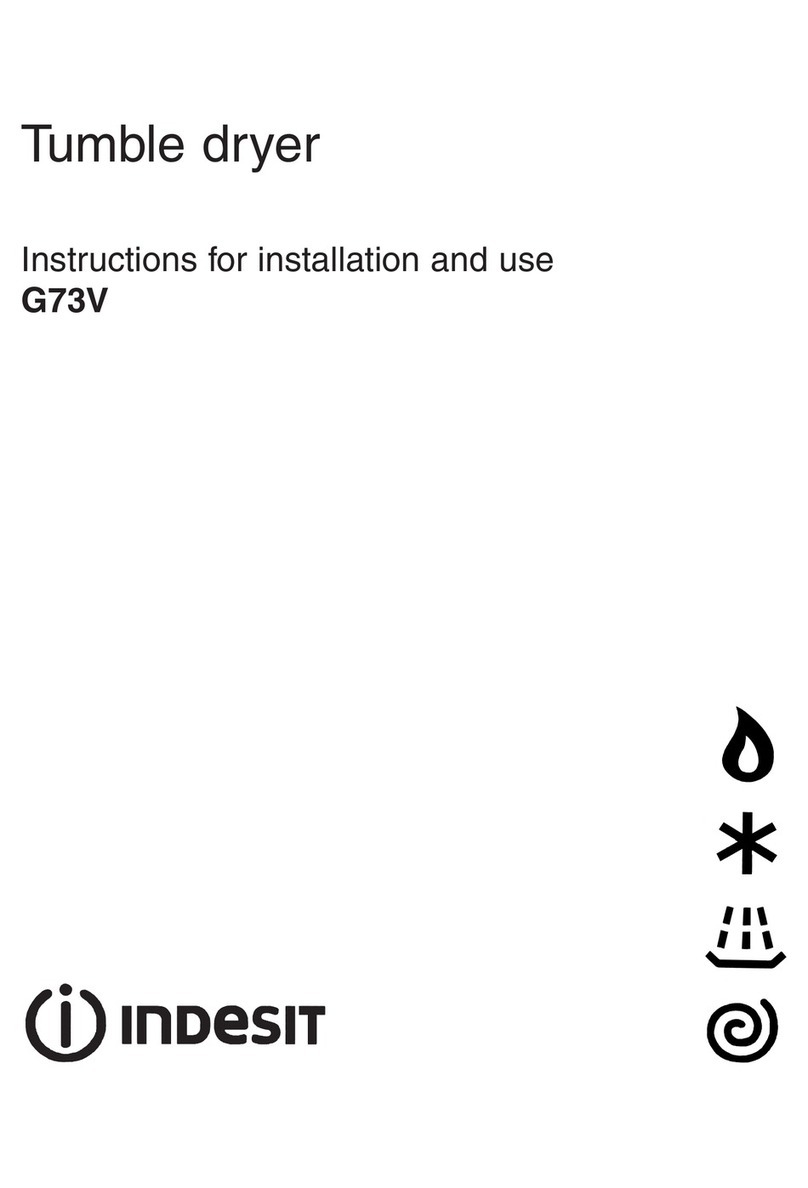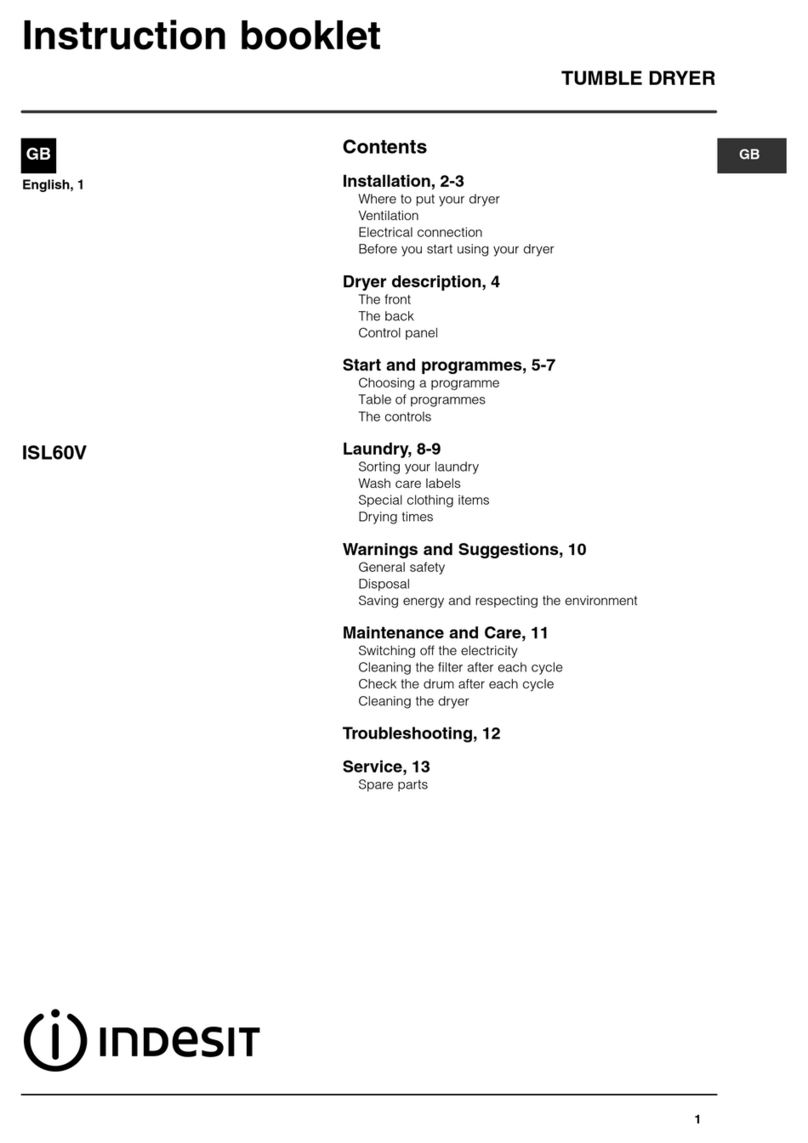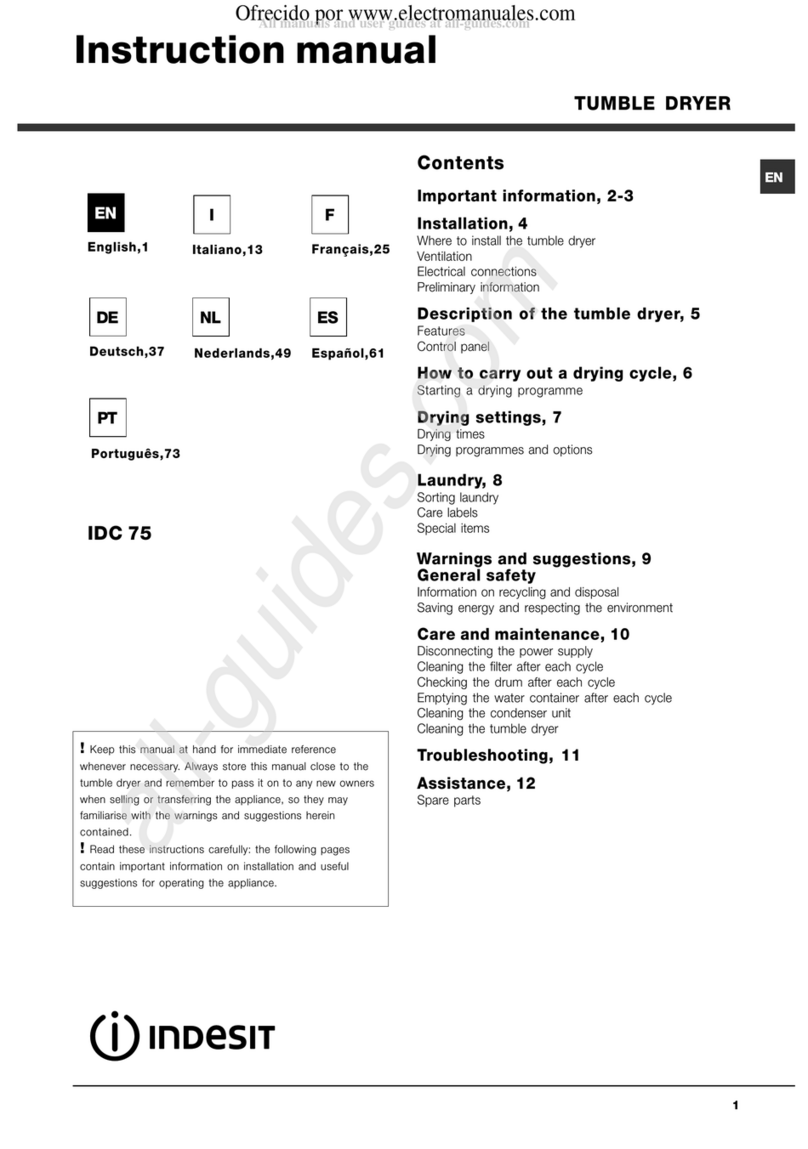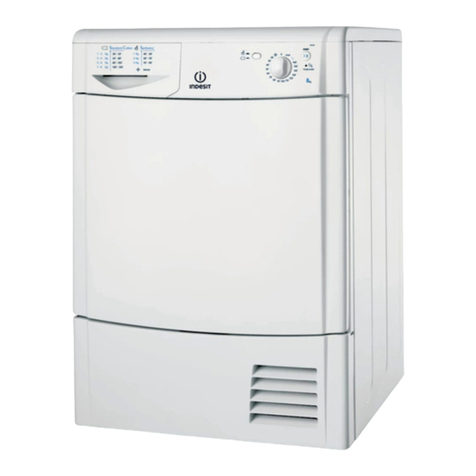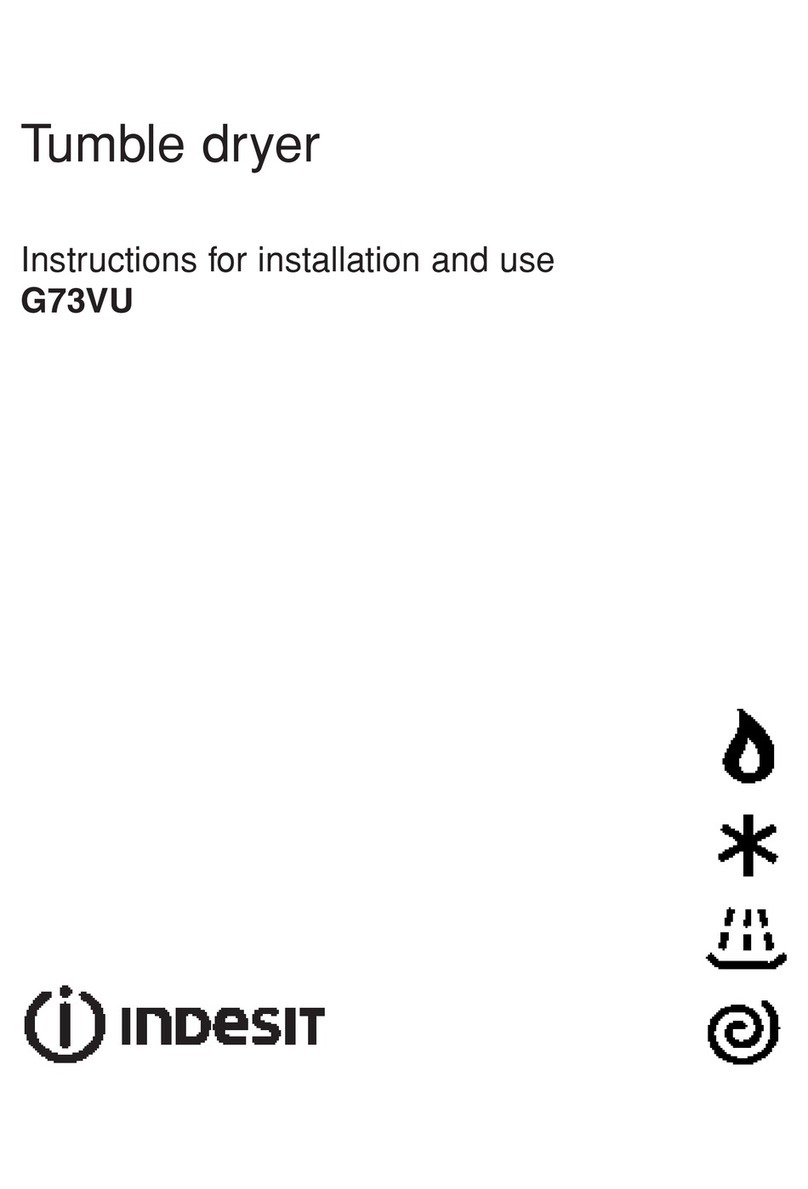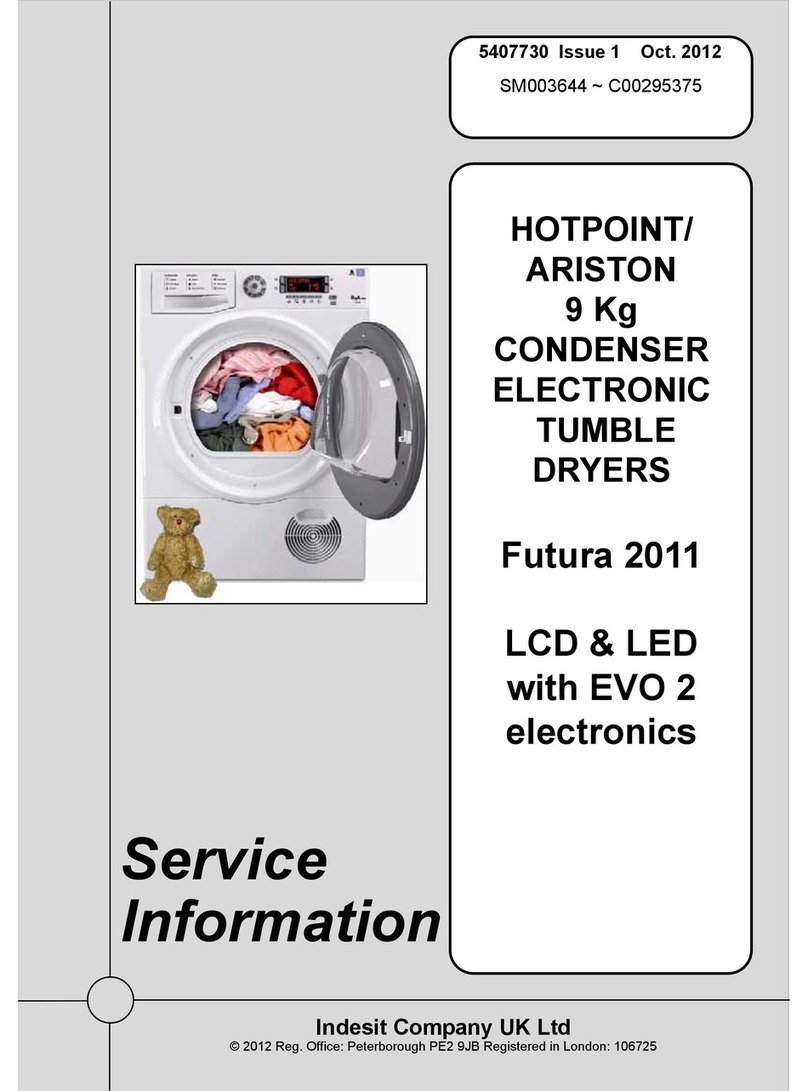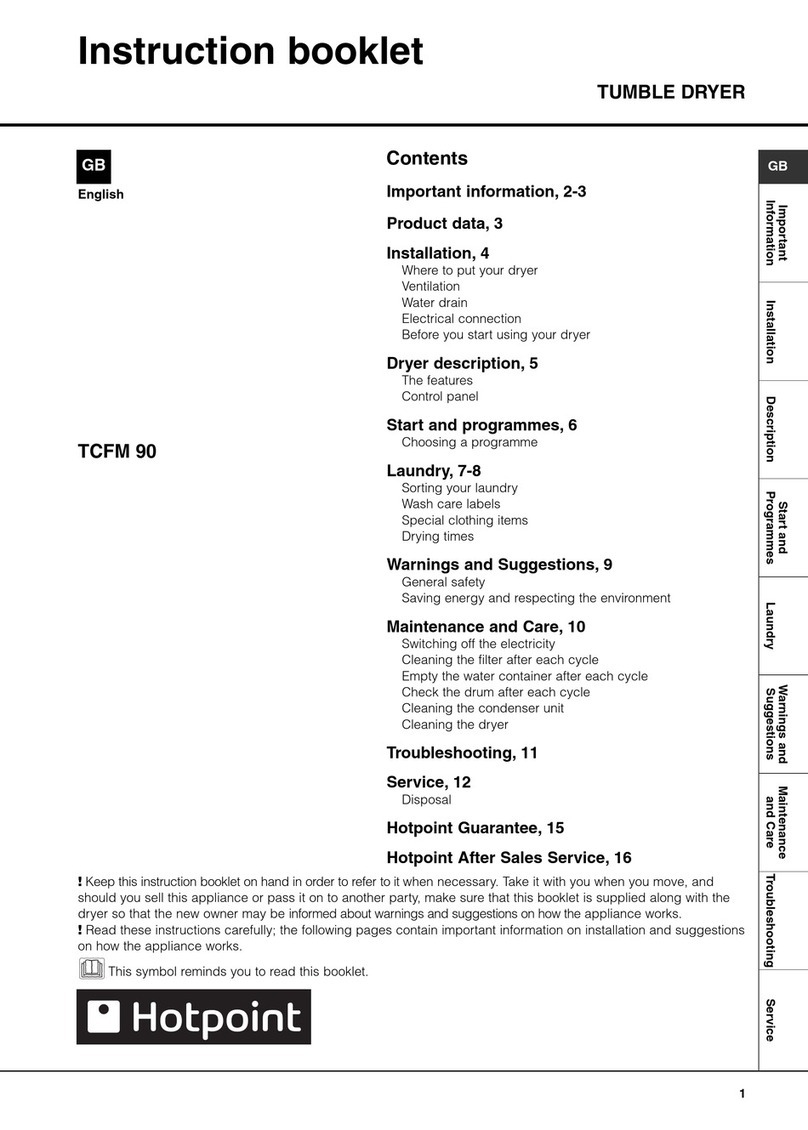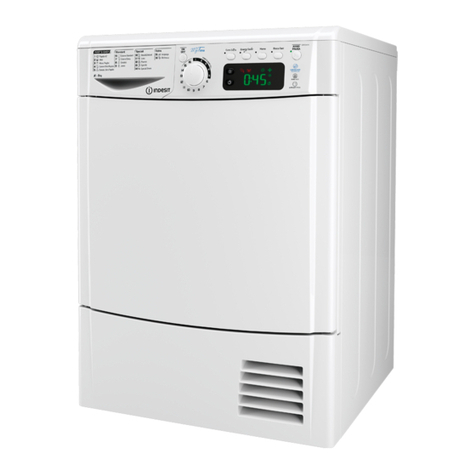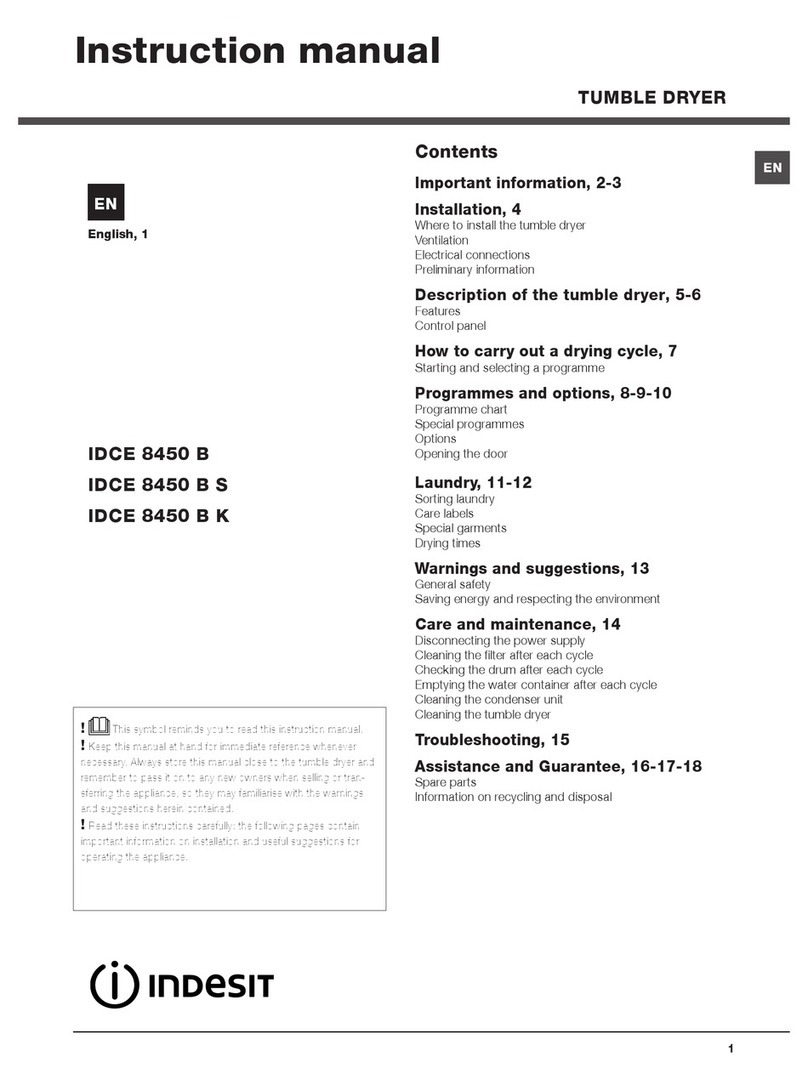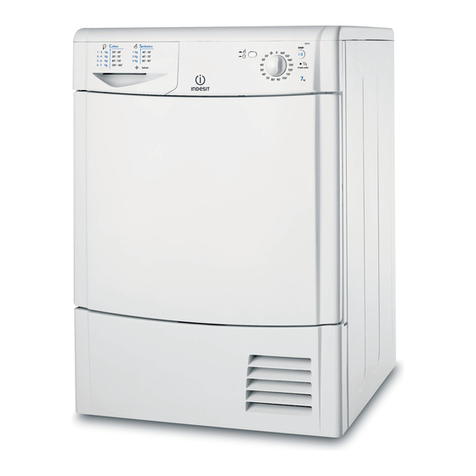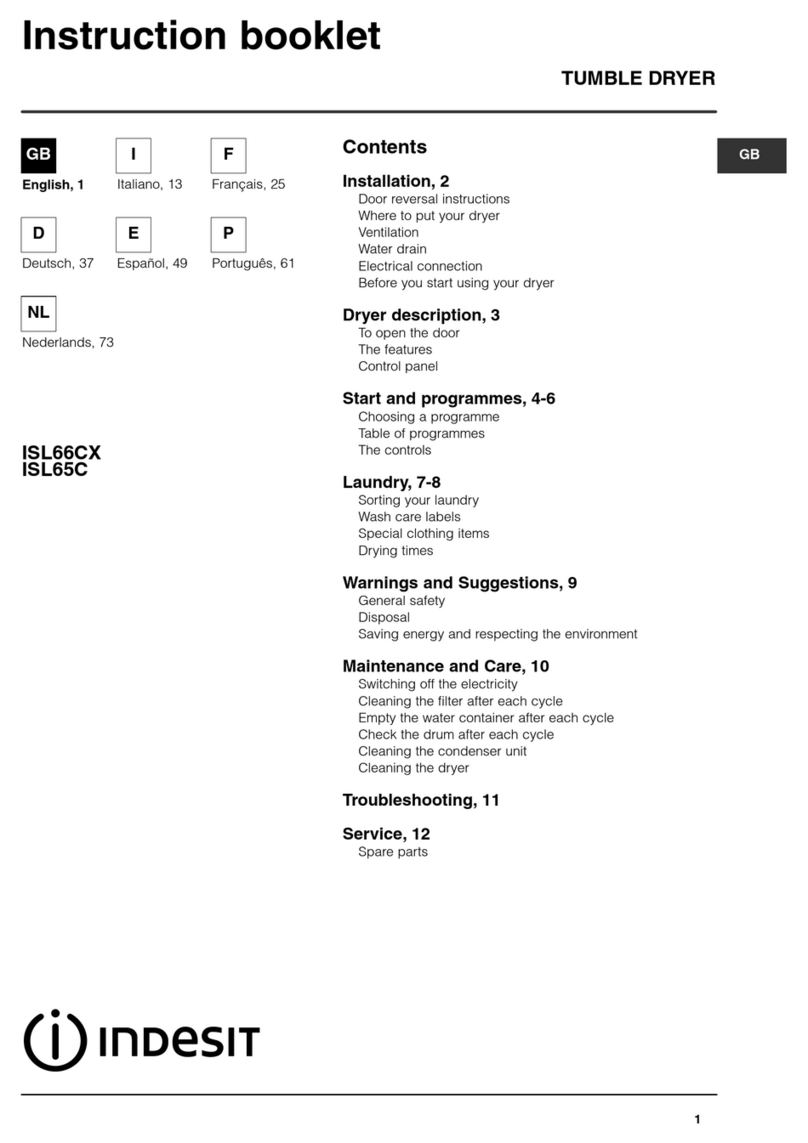EN
9
Jeans Programme
This programme is suited to washing cotton denim jeans. Turn the front pockets inside out before drying the jeans. It is suitable for
loads of up to 3 kg (about 4 pairs).
This programme lasts about 1:25 (hrs:mins), although it may last longer depending on the size and of the load and on the spin
speed used in the wash cycle. Garments dried using this programme are usually ready to be worn, though edges and seams may
be slightly damp. In this occurs, turn the jeans inside out and reacti ate the programme for a short while.
Use this cycle for 100% cotton garments only; do not mix dark and light colours and a oid using this programme for garments
with embroidery and accessories (elastic strings around the waist area, brooches, etc.); turn pockets inside out.
Outwear Programme
This programme is specific for drying water-repellent fabrics and sports jackets (e.g. Gore-Tex, polyester, nylon). Drying the
garment after a wash cycle has a beneficial effect as it reacti ates the garments water-repellent treatment.
It can be used for loads of up to 2 kg. The programme lasts about 2:00 (hrs:mins), although it may last longer depending on the
size and density of the load and on the spin speed used during the wash cycle.
Sport Intensive Programme
This programme is studied for safely drying garments such as tracksuits and shorts bearing the symbol. It is ideal for clothes
which do not need to be dried fully. Suitable for loads of up to 4 kg, it lasts about 1:20 (hrs:mins), although it may last longer
depending on the size and density of the load and of the spin speed used during the wash cycle. We suggest turning garments
inside out before drying them.
Sport Light Programme
This programme is studied for safely drying garments such as tracksuits and shorts bearing the symbol. It is ideal for those
garments that do not need to be dried fully or which ha e to be ironed. Suitable for loads of up to 4 kg, it lasts about 1:10
(hrs:mins), although it may last longer depending on the size and density of the load and of the spin speed used during the washing
cycle. We suggest turning garments inside out before drying them.
Special Shoes Programme
This programme is specific for drying sports shoes of sizes 37-46. The shoes must ha e been pre iously washed and spun at a
minimum spin speed of 400 revolutions.
A specific shoe rack is pro ided and must be used, otherwise the dryer will be damaged if shoes are dried in the drum. Remo e the
filter from its holder on the front part of the dryer and position the shoe rack.
Place shoelaces inside the shoes then load with the tips of the shoes facing downwards and the soles frontwards.
Drying times ary according to the shape and type of the shoe. If the shoes are not completely dry at the end of the programme,
restart the programme.
Do not dry shoes that ha e gel or flashing lights inside them. Only dry shoes made of synthetic material or rope. Once the
programme ends, remo e the shoe rack and replace the filter into its holder.
Easy Iron
A short 10-minute programme that relaxes the garments fibres in order to facilitate ironing and folding.
This programme is particularly recommended for cotton or mixed cotton fabrics.
For optimal results, do not o erload the drum (the following alues refer to the weight of dry garments):
Fabric: maximum load
Cotton and mixed cotton: 2.5 kg
Synthetic garments: 2 kg
Jeans: 2 kg
Empty the dryer as soon as the programme ends; hang, fold or iron garments then place them in the wardrobe. If this is not
possible, repeat the programme.
As this is not a drying programme, it is not to be used for garments that are still wet.
The effect produced by the programme aries according to the characteristics of the each fabric: fabrics such as acrylic fibres or
Tencel® do not gi e the same results as traditional fibres (e.g. cotton).
Refresh
A short programme suitable for refreshing fibres and garments through the emission of cool air. It lasts about 0:20 (hrs:mins).
As this is not a drying programme, it is not to be used for garments that are still wet.

